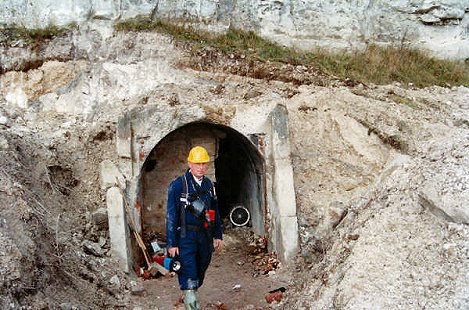|
|||||||||||
| Created 25-08-2001 Last update 06-08-2019 | |||||||||||
|
|
|||||||||||
|
|||||||||||
|
|
|||||||||||
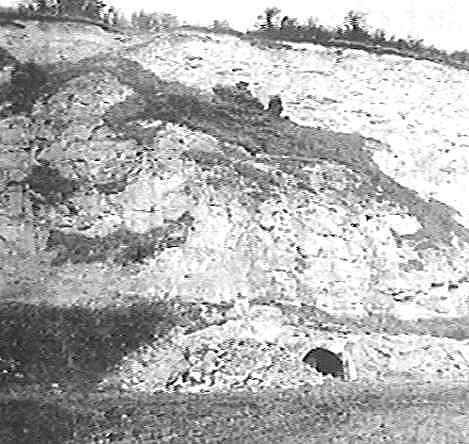
|
|||||||||||
|
|||||||||||
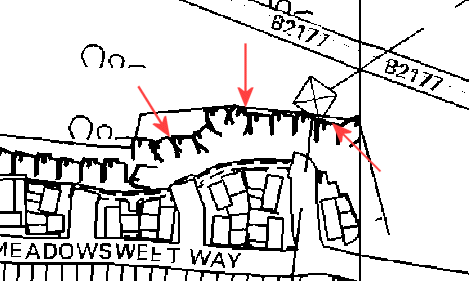
|
|||||||||||
|
|||||||||||
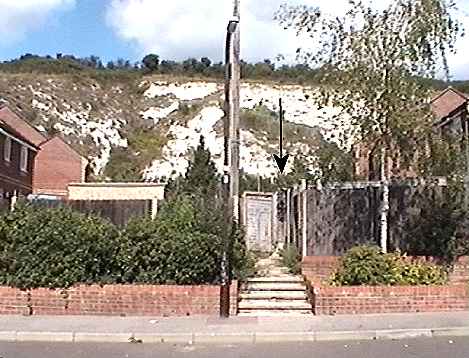 |
|||||||||||
|
|||||||||||

|
|||||||||||
|
|||||||||||
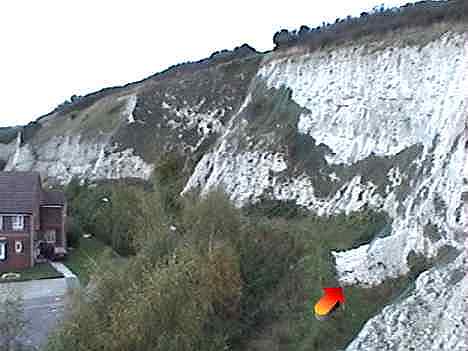
|
|||||||||||
|
|||||||||||
 |
|||||||||||
|
|||||||||||
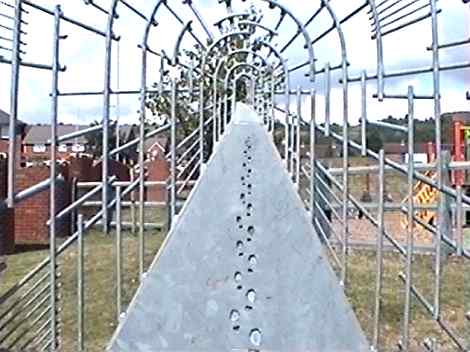 |
|||||||||||
|
|||||||||||
|
|
|||||||||||
|
Here are some extracts from emails received about the Wymering Deep Tunnel Shelter. Any italicised comments in [] brackets are mine. |
|||||||||||
| New 06-08-2019 | |||||||||||
|
I have recently picked up on your website after talking to my grandchildren about the Portsmouth Blitz and ensuing air raids. My name is Brian Read. I lived at 62 and later at 66 Mablethorpe Road for most of the wartime, after being moved from Melbourne Street in Portsmouth There were two families living here which included my mother my mother, my late sister Julie (three years younger than me) and myself. (now 84 years old) plus my maternal grandfather. The other consisted of my aunt Lucy, sister to my mother, and her two sons, David who sadly passed away a while ago and his brother Ian who resides in Lee-on Solent. We were allotted section J5. My age has not dimmed my memories of the red painted steel framework built, I imagine, to minimize any rock fall and bolster the moral of those using the shelter, and the galvanized so called bed spring on which we laid our bedding. I think I am right in saying the 'beds' were stacked three high. In retrospect I doubt there was another bomb shelter in England that was as impervious to the enemy onslaught as the Portsdown Tunnels. Portsdown Hill later became the most wonderful playground for any child. Fort Widley, Widley Lane, Pigeonhouse Lane, the stream at the bottom. The Chestnut Woods where we would sometimes find things dropped by the GIs [American Troops] hidden there prior to D-Day. Southwick House where us kids might climb the wall to scrump apples. On the rare occasions I return to Portsmouth I always park close to the George Inn and look south, over the city and on to the Isle of Wight. I have had the good fortune to travel widely during my working life but feel good to be back on the playground that gave so many children endless adventures.
Brian J Read - July 2019 |
|||||||||||
|
|
|||||||||||
| New 06-02-2016 | |||||||||||
|
I was 7 years old in 1939 when I went to live at 45 Harleston Road Wymering. Irish labourers had just started to dig out the chalk tunnels with pick-axes and shovels. The big blitz of [10th] January 1940 saw my family and others rush up the path to what was the start of the [Wymering] tunnels but was only at that stage just a large cave and we took shelter there till the raid was over. From then on when dusk fell we headed for the shelters. As the tunnels became more developed we became more of a community and group activities began. I joined a song and dance troupe organised by Rosy Layton who also lived on Harleston Road. At a later date the army used the chalk pit for military purposes and civilians were not allowed to enter the area but my neighbours son who was curious got in looking for shrapnel souvenirs, and he found a hand grenade which exploded when he touched it. We heard later that he lost a hand. [This event is documented here]. We have
lived in Canada since 1957 but I still remember the tunnels vividly. |
|||||||||||
|
|
|||||||||||
| New 17-04-2012 | |||||||||||
|
I have just been looking at the Portsdown Tunnels website. During the war I lived with my parents at No 11 Boston Road, Wymering. We had an Anderson Shelter in our back garden, but during 1942 (while my father was away serving in the Navy on Malta convoys ) my mother and I used to go every night to the Wymering Shelter. I remember well our nightly trudge carrying our bedding on a pram (you had to take your own as only mattresses on 3 tier bunks were provided). The entrance and reception area were contained in a small brick and concrete building.
Bert Holmes - October 2011 |
|||||||||||
|
|
|||||||||||
| New 19-04-2012 | |||||||||||
|
I've been fascinated by your website and have spent some long times exploring the site and reading contributors memories of Portsdown Hill, the tunnels, Wymering and Paulsgrove. I was about eighteen months old at the outbreak of WW2 and I have appended below a brief extract from my story which resides in the BBC archive 'WW2 The People's War'. I have never been able to trace any photos of the IOW estate taken during the days before D-Day, when the roads were crammed with tanks, lorries and their crews. I look forward to seeing many more contributions on this excellent site. 'As the air raids continued my mother, with two infants in the pram and me hanging on to the side, would join the evening exodus from the Cosham estate to the communal shelters buried deep in Portsdown Hill which were accessed through tunnel entrances in the chalk pit above the Wymering estate. These
shelters were basically concrete-lined tunnels with steel bed frames in
places and floors which always seemed wet. There was a constant hum of
conversation and clatter of tea cups and mugs. We were totally insulated
from the outside world within the confines of these shelters and slept
undisturbed by air raid sirens. We would leave for home at daybreak and
walked the mile or so back to Freshwater Road. Going home was all downhill
so the return trip was quicker than the evening trudge.' |
|||||||||||
|
|
|||||||||||
| New 19-09-2010 | |||||||||||
|
I am new to e-mailing as I have only recently got an old computer but have just spent a wonderful half hour reliving my childhood in Cosham. I was born on the Dockyard estate in 1931 and spent the war in Cosham. I was married at St. Colman's and still lived there until 1973 when we came to NZ. I remember the tunnel shelters during the war very well as my grandfather (J.Crook) was in charge of them for some time. I remember going to a Christmas party there one year. I have always wished to visit again but am now too old and arthritic for the journey, but your web site has brought back many happy memories.
Colleen - New Zealand - July 2010 |
|||||||||||
|
|
|||||||||||
| New 08-06-2009 | |||||||||||
|
My name is Martin McKnight and I grew up in Wymering in the 1960s. My bedroom window was virtually opposite the main entrance. I was there on the day that a JCB digger driver who was working for Pirrelli, laying cables, happened to go through the Chalkpit and opened up what we now know to be the western escape route. This was around 1965. This entrance remained open for about three years until the council came and backfilled it with concrete. I was among the group of lads who eventually managed to open up the main entrance in 1973. We spent many hours in the caves as we called them. I was there when young Ronny Field [see below] found his gold ring which he has told you about in other correspondence. We knew every inch of those tunnels, happy days as they say, but I would like to bring two things to your attention. They may be insignificant but here goes. In the mid 1960s a couple of local lads uncovered a brickwork shaft with a thick concrete top. The shaft was about three feet square and went down about six feet, until it hit chalk which I think may have been used as backfill, but you could just make out a brick arch just below the chalk. This shaft was situated very near where you say the eastern escape route was situated, it might therefore be something to do with the water inspection tunnel, but there was no ladder that I can remember. The second thing I would like to bring to your attention is an underground metal lined room situated at the bottom of mill lane; the lane running down to the left of Fort Widley. At the bottom of this lane there is a large house, the metal room as we called it was situated in a small field just on the bend of the road. It had a circular metal covering, and was quite large inside but was pretty much filled with debris. I remember there were two ladders going down the sides of this tank, which would suggest they went down a distance. This site is actually visible on Google Earth, now visible as what looks like an earth circle. I hope this
is of interest, and may I say what a good site you have created here. I
know a few of the people who have contacted you - brings back so many good
memories, cheers Bob, keep it up. |
|||||||||||
|
|
|||||||||||
|
I have been looking at your website and it brings back many memories of the times spent playing in the Wymering tunnels, when I was one of the people who spent many hours chipping away at that lump of concrete. I have read with interest some of the emails you have received, knowing a couple of people who sent them. After some weeks exploring around the tunnels and frightening a few mates by switching off the torches, I knew the tunnels like the back of my hand. At the back end of the tunnels, near the vent and escape shafts, on a chalk wall was a superb carving of a lady's face. Her name was a Mrs Page it think. Apart from a few remnants of the three tiered beds there was not much else in them we thought until one day, as we were messing about, someone dropped their torch. As I bent down to pick it up I saw a round coin in the gutter which ran along each side of the tunnels. To our amazement it was a old sixpenny bit. From then on I searched all the gutters and found a small fortune in old coins ranging from halfpennies, thrupennies (3d), penny farthings and even a gold ring. As someone has already told you a couple of mates got burned real bad, which saw the tunnels closed off. As I knew that place real well there was still a chance of getting back in through a chalk wall which was at the end of one of the toilet blocks. I have often been up there to look but choose to leave alone. Anyway I hope this story is of use to you as I am pleased that somebody has taken the time to explain about these tunnels. I would love to go back in and have another look.
Ron Field - August 2008 |
|||||||||||
|
|
|||||||||||
|
I read with
interest the recent story posted by Kenneth Crisp [see below]
concerning the upgrade to the National Grid power lines in 1967. Also, my mother( who used the shelter) claims that Lord Haw Haw actually made at least two references to the tunnels. In one he supposedly sneered about the people of Portsmouth being. " Rats scurrying down their tunnels." In the other
he supposedly bragged about the chalk pits being "Wonderful beacons that
guide our bomber pilots onto their target." Martin Wilkinson - July 2008 |
|||||||||||
|
|
|||||||||||
| New 07-06-2008 | |||||||||||
|
I was born in Winchcombe Road, Paulsgrove in the autumn of 1954. I now live in Ridgeway Close, Paulsgrove – within a quarter of a mile of each other. Both of these roads are a part of the hillside community council estate known locally as the ‘Reservation.’ I have spent my whole life on the Reservation. It is all I know. I never tire of Portsdown Hill and the surrounding area. To me the hill has always been a magical and enchanted place. I remember back to my wonderful childhood the joy and delight of playing on and around Portsdown Hill: the thrill and excitement of exploring the forts that run along the top of the hill and the deep tunnels that crisscross the hillside – an idyllic playground. I grew up with a bunch of boys with much the same background as me. All coming from large, poor families. Because of our shared background we formed a strong united bond and stayed together throughout the sixties – we were the Paulsgrove boys. We used to meet and play regularly in a field at the foot of Portsdown Hill in Leominster Road. It was here that most of our adventures were hatched. We would play football after school and plan the coming weekend’s adventure. This brings me to our adventure with ‘The Rope’. The tunnels beneath Portsdown Hill had been explored on many occasions by our gang. We knew much of their history and secrets. To us there were three sets of tunnels. The first in Wymering chalk pit, the second under Fort Southwick and the third was west of the fort and north of Browning Avenue [The Naval Fuel Bunkers]. In the summer of 1967 The National Grid were upgrading the power lines and pylons. We watched with interest as the new pylons were being erected. To hold the newly erected pylons a thick heavy rope was anchored to the ground on one side, tied to the very top then down to the other side pinning the pylon in place. One of our gang (Fred) said ‘You could do a lot with a rope like that’. He wanted that rope and decided to climb up and get it. We all watched from the ground as Fred weaved his way to the top of the 40 foot pylon, unhooking the rope with ease and letting it fall to the ground so we were able to release it. Fred, or Fearless Fred, became our leader that day. We hid the rope at the top of the hill until the weekend because Fred had a plan to explore Wymering tunnels again. That weekend about 9 or 10 of us met up, each of us with a battery light of some kind – I had a rear bicycle lamp. We carried the giant rope between us to the north of the chalk pit on the south side of Southwick Hill Road where an air intake shaft was capped off [interesting to note that these still existed in 1967]. We removed the cap. It was decided that some boys would have to stay and keep watch; no shortage of boys for that duty. Some of us tried to back out by saying we were unwell but Fred was there convincing us there was nothing to be afraid of – after all, didn’t we have the rope to guide us back to safety? We climbed into the top of the shaft on a steel ladder fixed to the wall. Fred secured the rope to the bottom of the ladder. Fred led the way with the rest of us in single file behind. We had entered this shaft before but never ventured into the blackness before, until now. Each of us clutched the rope, scared out of our wits following fearless Fred with the darkness held at bay by a puny assortment of torches. We had passed through 2 identical intersections when Fred called out ‘Stop ! I can see something ahead.’ There was an eerie pause as the wind whistled making whoooo sounds. ‘What is it?’ one of the boys asked. ‘It’s a bed’ said Fred. There was a brief moment of silence before someone said ‘Is there anyone in it?’ Lennie said ‘Don’t be so dense. Come on, I’m going back. There’s nothing down here.’ We all turned
about using the rope as a guide and made our way to the surface, laughing
and giggling all the way feeling like conquering heroes. That was just one
day out of so very many spent on Portsdown Hill. |
|||||||||||
|
|
|||||||||||
| New 07-06-2008 | |||||||||||
|
My name is Matthew Herridge, I lived in Paulsgrove all of my childhood and grew up in the shadow of the Wymering Pit. I thought you may be interested in some photos taken from when the air raid shelter was opened for assessment (1993) before final closure. |
|||||||||||
|
|
|||||||||||
|
When I was about 12 I attempted to force entry into the shelter by means of a lump hammer and a chisel. There were a lot of rumours of it as I grew up and being young had to look for myself. The entryway was blocked by a large 'plug' of concrete and large bramble bushes, much higher than a person, blocked the access. However the top lintel of the entryway was still visible if you climbed the chalk around it and onto the roof. In the above
photo showing the door open for the first time in many years you will
notice on the top just to the right a large area of damp in the concrete.
This was where I had tried to gain entry many years ago and by the look of
it from cross-section I had been at least half way through the concrete.
No mean feat for a 12 year old. |
|||||||||||
|
|
|||||||||||
| New 19-04-2008 | |||||||||||
|
I read with great interest the article in the local paper supplement [NEWS 12 April 2008] about the Portsdown Tunnels. In the 1960s and 1970s, I lived in Harleston Road, Wymering. My back garden backed onto the Wymering Chalkpit. I used to spend a lot of my childhood playing in there with a lot of my friends. We heard about the tunnels in the Chalkpit from quite a lot of local adults. So we called them the air raid shelter. When I was about 12 years old me and my friends decided to try and get into them. So we dug hole in the chalk; we were shown where they were approximately by an older friend. We eventually got into the tunnel and to our great surprise all we saw was a load of bats flying around. Over the next few months we explored the tunnels more equipped with a lot of torches, at one time there were about thirty of us in the tunnels at once. We didn't know that there was another entrance to the tunnels in the same Chalkpit, and we were surprised to find it. So we started to dig another hole through the bricks, at the time we thought it was a good idea because we would have two ways to get into the tunnels. I can remember that we used to camp overnight in the tunnels at the weekends. At the time I enjoyed it very much because I was only a child and we didn't realise the tunnels were dangerous. About ten years later two of my old friends got badly burned in them. The reason being is that they were in the tunnels and they wanted a cigarette but when they lit their cigarettes up there was an explosion due the build up of some sort of gas which was in the tunnels [this was supposedly due to a Methane build up as someone had dumped a mattress in the shelter]. As a result both entrances that we had made were resealed by the city council. Over the years I have began to realise how stupid we were going into the tunnels, but at the time we were only kids and we did not realise how dangerous the tunnels were. I congratulate you on what a wonderful job you are doing to inform the population of Portsmouth about the heritage of the tunnels. I personally would like to see the tunnels open again to the public, then today's generation could see what it was like to live during World War 2. I have a great knowledge about the tunnels. I am 48 years old and I can remember my parents telling me how hard it was to live during World War 2. It was not until in first entered the tunnels I realised that they were telling me the truth.
Tony Redding - April 2008 |
|||||||||||
|
|
|||||||||||
| New 30-03-2008 | |||||||||||
|
I can remember going into the Wymering tunnels when I was 7 years old around about 1974 as I recall. There was iron piping running through the tunnels or conduit for lighting cables. The tunnels seemed to go on forever. I even pinched my Grandad's old flash torch to go into the tunnels. It was like a kids playground down there; it was cold damp and very musky. At the time I lived in Peterborough Road. The tunnels where re-sealed by firemen; they poured concrete over the small holed entrance. Apparently a boy went in their with a paraffin lamp, and on the way down the ladder the paraffin leaked onto his clothes a set him on fire he was badly burned and that's why the tunnels where re-sealed. I haven't got a name for the boy but wondered if you knew of this accident at all. Alan Benham - March 2008 |
|||||||||||
|
|
|||||||||||
|
1970s. I have gone into those air raid shelters many times with my old buddies.
We would spend days digging our way in, we even got trapped inside once after
some local boys blocked the entrance on us. It was very exciting finding the stairway, a great time in my life.
I can still remember the smell of bad air and candles burning, sometimes we used flashlights. It was just like going back in time, old posters on the walls and old items on the floors, cans papers etc.
|
|||||||||||
|
|
|||||||||||
|
|
I as a kid, like all the other lads from the Paulsgrove area, spent many a day playing around in the chalk pits and may I say being chased out by the watchman. I and a friend spent one summer evening watching a children's serial being made in the pit. It was called "The firm of the girder stone" about the Shelters in the Wymering pits. I came about them in the sixties when there was a chalk fall and it exposed the blocked in entrance to the shelter. I believe we were one of the first people to visit these tunnels since the 50s.If I am right in saying, a young lad from Birdlip Rd was killed when he fell down the shaft in these tunnels. When we went into these tunnels, it was as time had stood still. The latrines were still perfectly intact and there were old fashioned steel bed frames in there and all the brass light fittings were still in place. We also went up the shaft (I believe there were two of them). You had to enter the shaft via a small entrance at the base. You then climbed the steel ladder. This finished at a concrete plinth. You had to stand on this plinth and climb up the next ladder and so on until you reached the top. At the top of this steel ladder it opened up into a small recess i suppose the size of some of the sheds on the Paulsgrove estate. I can remember trying to find this room from the top of the hill by means of 1 or 2 lads staying in the access and the others going onto the hill while we made a noise. It sounds silly now but that is what we done. Also in this tunnel there was an old pipe about 2ft in diameter which traveled horizontally towards the south, or it appeared to go in that direction. One or two lads tried travelling down it but one nearly got stuck and decided to give up. The size of the tunnels seemed enormous. They were supported by corrugated tin and RSJs. As lads we spent quite a few Monday nights up there because we were not allowed into The Grove Youth Club on Mondays. After a couple of weeks a few other people started to mess around in these tunnels via this small access hole in the chalk face and were not content with just being there as they started to take all the brass light fittings that were still in there. We went back after a few months and found the hole in the chalk face had been blocked up again.
|
||||||||||
|
|
|||||||||||
|
|||||||||||
|
|
|||||||||||
